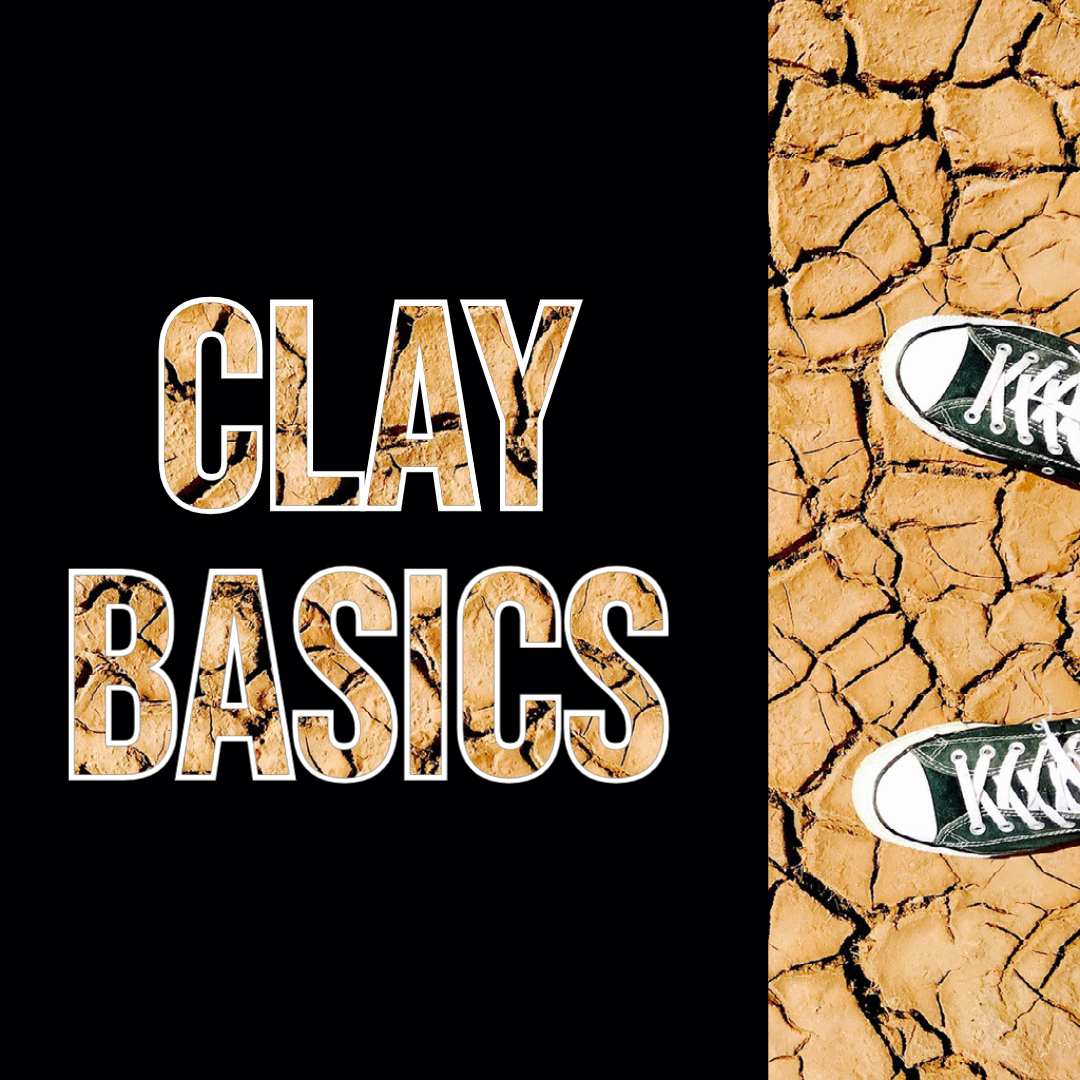CLAY, the very basics.
This is NOT an in depth guide to everything to know about clay. This is the bare bones basics, the must know overview for those just delving in to the realm of pottery.
What kinds of clay are there? The short list is: Low Fire, Mid-Range, and High-Fire.
Why are there different types of clay? It comes down to firing temperature/method, handling method, and aesthetic.
While I was in undergrad, we learned to mix our own clay, which required storing large quantities of dry material and having a heavy duty clay mixer in order to mix the clay. I had explored a few clay bodies that I mixed myself in undergrad, but when it came to working from my own tiny 350 square foot studio, I had to start from scratch and look at buying my clay commercially. To help me decide what to buy, I had to answer a few questions…
What is my equipment capable of?
Mainly, what temperature (or cone) CAN you fire to? If you have access to a Raku kiln or Wood Kiln, that too, would dictate the kind of clay you might use. Raku fires at a lower temperature and needs to be able to withstand the sudden change in temperature due to the firing process. Wood firing on the other hand, can go beyond cone 11 – will your clay melt at that temperature?
I have two kilns, a large kiln rated to cone 6 and a small kiln rated to cone 10. Hypothetically, I should be able to fire to cone 10, using the large kiln only for bisque, but to save wear and tear on my smaller kiln, I chose to fire to cone 6.
How will I be handling the clay?
In addition to firing temperature and method, are you mainly throwing on the wheel or hand-building, or are you planning on making large sculptural pieces?
If you are throwing, looking for a clay that has good plasticity, will make throwing easier, especially as a beginner. If you are making large sculptural items, you might need a clay that is higher in grog to help support the structure.
I planned to throw most of my pots. There may be a few exceptions, but to start, that was my main focus.
What do I want my clay body to look like?
Once you determine how you are firing, and how you are making, the next thing to consider is visually, what kind of clay body do you like? Do you like the clean look of super white porcelain, the depth of a speckled stoneware, or the striking visual of a super dark brown chocolate clay body? Each has their own set of properties to consider and test with the glazes you choose.
For me, I knew I wanted to mix my own glazes, and I like the process of testing. I am limited to the clay I can get locally, so I started there. Which brings me to…
If you want to just dive in with minimal testing, I recommend going with a clay from the same manufacturer as the glazes you are buying. Contact the glaze manufacturer and ask them for recommendations. They will be the most knowledgeably about any incompatibilities that are already known. For example, if you want to start with Amaco Potter’s Choice Glazes, they have extensive information already available about their own clay bodies, including pictures of test tiles with their glazes. You can find this here: https://www.amaco.com/t/glazes-and-underglazes/high-fire/potters-choice
Where can I buy clay?
There are many pottery/ceramics supplies stores online. However, due to the weight of clay and shipping, it is worth researching local supply stores where you can pick up your clay in person. For some, it may be worth the added cost to buy online depending on selection locally and distance to the supplier.
A few of the nationwide suppliers are:
Keep in mind, one bag of clay may be worth trying for a $15 shipping fee, but what if you start producing more? Will you want to start testing your glazes all over again when that costs no longer makes sense?
For me, I only have one clay supplier that is within 30 minutes of me. They mix their own clay, so I am limited to those, unless I want to make the 6 hour round trip to the next closest supplier. I decided to start locally for the sake of supporting local businesses, less stress on the environment, and to be frank, cost and convenience.
IMPORTANT THINGS TO KNOW & RESEARCH:
- Make sure you do not fire your clay higher than it is rated (without safely testing first). Understand what a cone is, and especially the difference between cone 06 and cone 6!
- Make sure to test the fit of your chosen glazes with the clay body, even if the glaze says it is food safe (especially if you are making functional items). Understand what functional and non-functional means.
- When shopping for clay, think about the big picture and your future goals.
Want to know more bare bones basics? Check out my other basics here!

